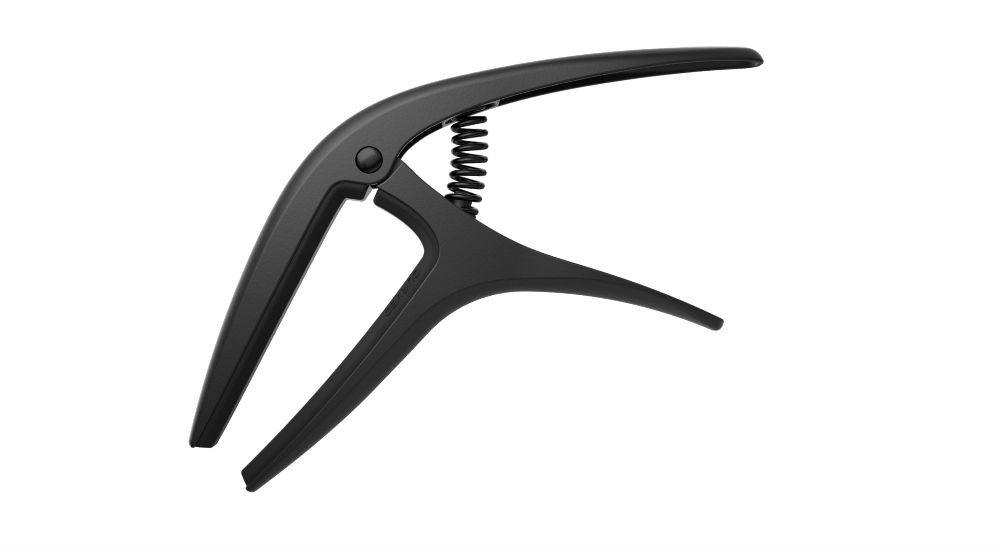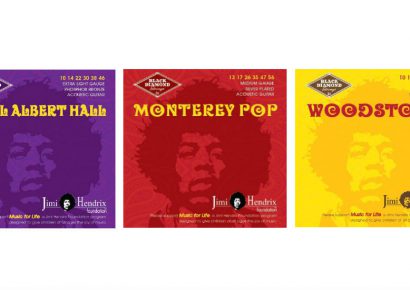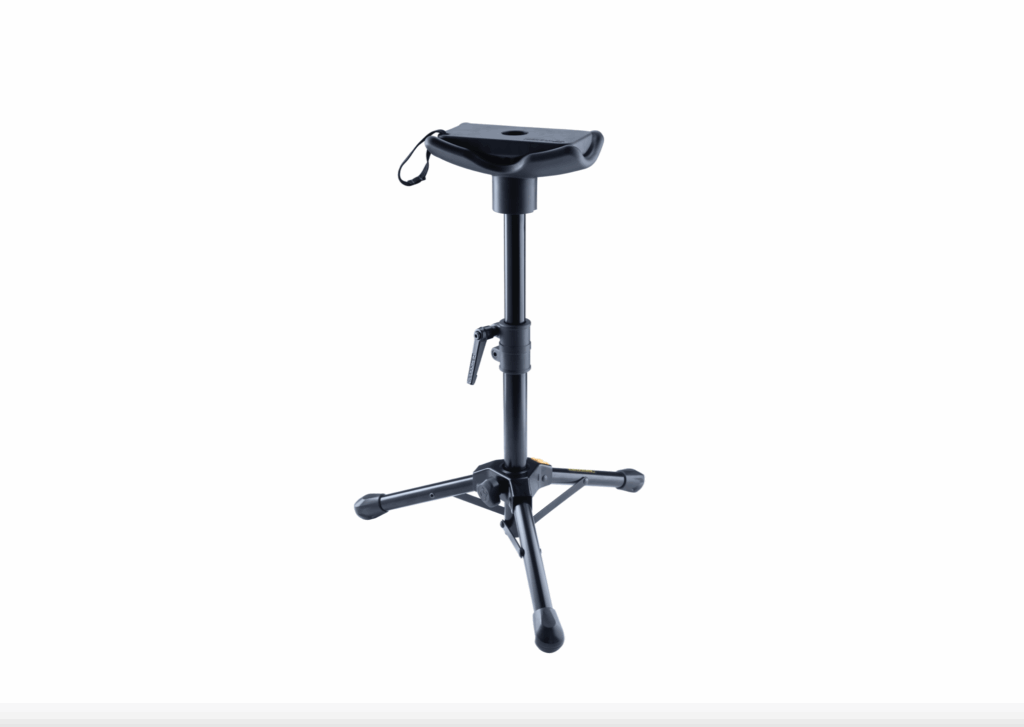As previously mentioned, Ernie Ball have had their name in almost every guitar accessory known to musicians worldwide. From their famous Slinky strings to strap locks and even branded gaff tape, it makes sense that the humble capo was next on their to-do list. While there is a metric tonne of different capos out there with bloated, over-marketed features, Ernie Ball have kept it simple with the Axis capo. This is done with good intentions, really; while guitar technology has constantly evolved over the years, the self-effacing capo hasn’t. To quote the old adage: why fix it if it ain’t broke?
The Axis capo is not to be confused with Ernie Ball Music Man’s existing Axis guitar – there’s no correlation between the two. The name itself is perhaps derived instead from the device’s main selling point – its dual-radius design. According to Ernie Ball, the Axis utilises this unique arrangement to enable it to adapt to any kind of fretboard imaginable. Be it a flat 16” acoustic fingerboard to a compound 7.25 to 13” fretboard radius, the Axis capo has got you covered. There’s no fancy step-adjustments, troublesome clips or tension modification necessary. As an additional bonus, this capo was designed with seven-string guitars in mind. Ernie Ball Music Man already boasts the incredibly sleek-looking John Petrucci and Jason Richardson signature seven string models, so it makes perfect sense to see them included in the mix.
Speaking of sleek, the Axis capo is all that and then some. There are four different colours to choose from: black, silver, bronze, and gold. Apart from the slightly reflective gold, the other choices are finished in a matte sheen. The stealthy black capo adorned with the stylish silver Ernie Ball logo was the winner for me, but the bronze finish came in at a close second, even looking like natural wood in the right lighting.
Where the Axis capo excels in is its ease of use. Ernie Ball have opted for a spring-controlled, single-handed action, making it incredibly simple to clamp on or relocate to a different fret. Unlike some of the lesser capos out there, the ‘jaws’ of the Axis capo are completely coated in sturdy moulded rubber, ensuring that your guitar’s neck finish remains undamaged. To select which fretboard-appropriate side you need, all you have to do is flip the capo over. It’s dead-easy and completely fool-proof. I tested this capo on two guitars: a vintage-spec 7.25” fretboard radius Telecaster, as well as an extremely flat 16” board belonging to the Faith Legacy Earth. As expected, there was zero buzzing and dead notes – an exemplary performance.
Sometimes, ease and simplicity beat out overloading on additional features. The Axis capo does its job and does it extremely well. The hardest part is deciding what colour you’re going to get.


